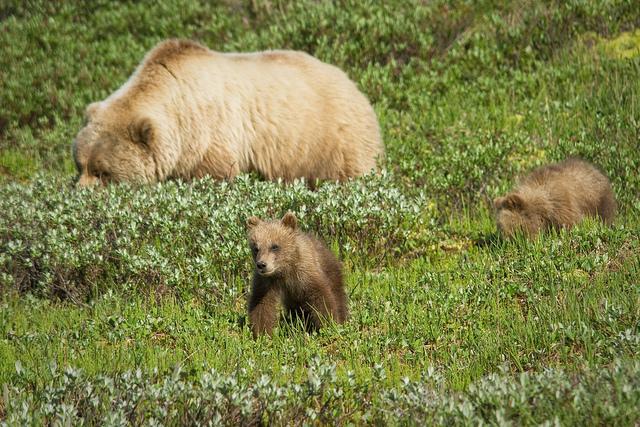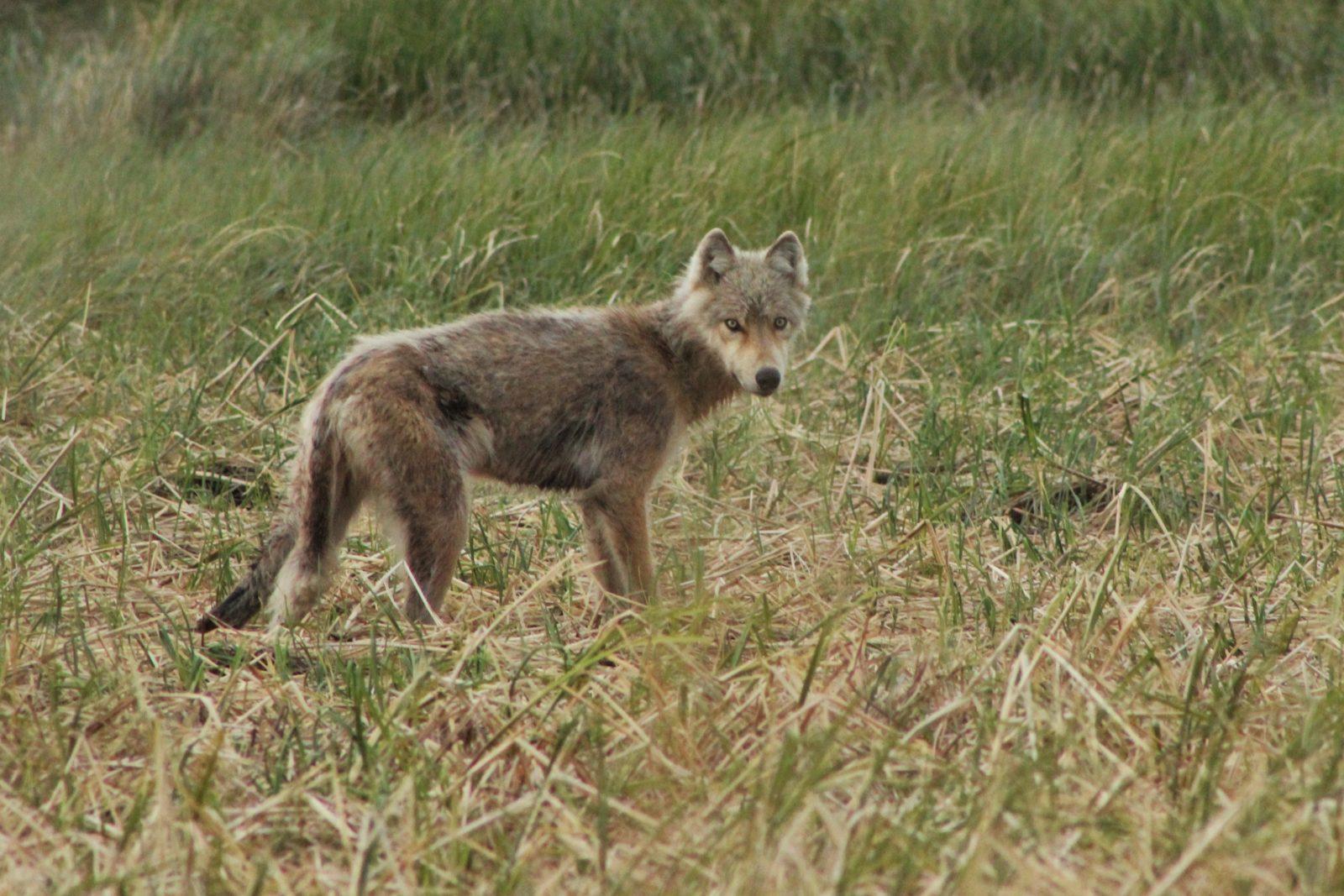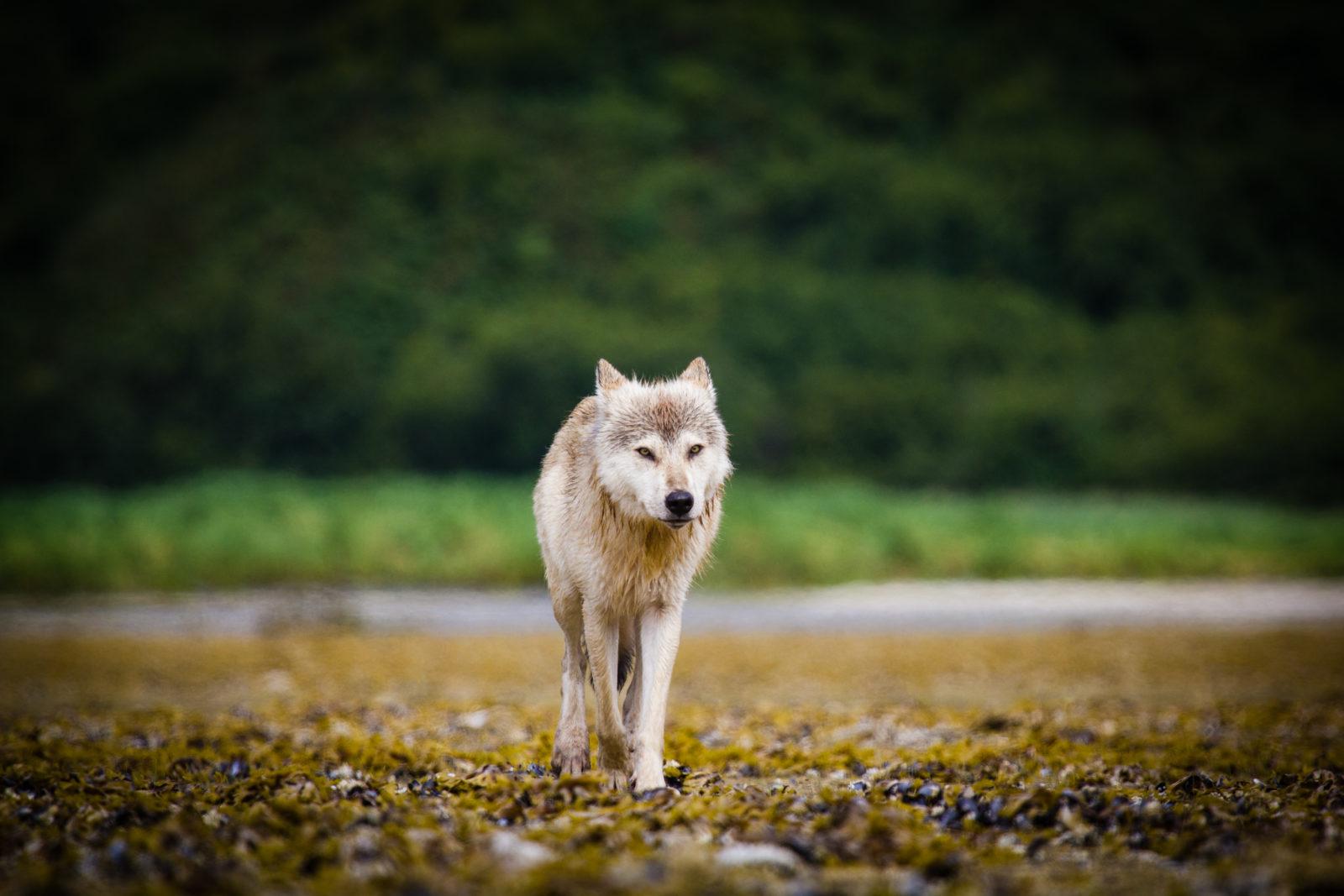
Park Service proposes hunting rule protecting wildlife in national park lands in Alaska
By Dawnell Smith
The National Park Service released a proposed rule earlier this month that would prohibit bear baiting, killing wolves during denning season, killing bear cubs in dens, and other hunting practices aimed at killing predator animals to manipulate natural predator-prey dynamics in national preserves in Alaska. This rule would replace a 2020 rule that allowed these practices and was later deemed illegal in court.

“We’re glad to see the National Park Service proposing a rule that protects ecological diversity and wildlife like bears and wolves for present and future generations,” said Rachel Briggs, a staff attorney with Trustees. “This proposed rule would realign the management of national park lands with the purposes for which Congress protected them.”
The new Park Service rule proposes a return to its consistent management practice of about 40 years prior to the 2020 rule, which for the first time allowed predator control in national park lands in Alaska.
We went to court over that rule in August 2020.
The federal District Court of Alaska concluded last September that the rule—which allowed using grease and doughnuts to bait bears to shoot them as well as other practices designed to alter predator abundance and behavior—was poorly reasoned and arbitrary.
However, despite finding the rule to be illegal, the court allowed that rule to stay in place while Park Service worked on a new rule.
This month’s proposed rule would replace the illegal and agenda-driven 2020 rule aimed at trying to increase populations of game animals like caribou and moose over the health of wildlife and national parks and preserves.

Why do some groups want to kill predators on national park lands?
Hunting is allowed in national preserves, which are a part of the National Park System, but the Park Service must make sure that hunting regulations comply with its statutory mandates to protect wolves, bears, and other animals.
The State of Alaska has repeatedly attempted to impose predator reduction efforts on national park lands managed by Park Service by claiming the State has control over hunting practices on these national lands. The Alaska Board of Game has repeatedly adopted regulations that are targeted at decreasing predator animal populations.
The goal of the Board’s policies is to make it easier to kill predators, with a goal of increasing populations of caribou and moose for hunters. Science doesn’t confirm that connection and, in fact, shows that relationships between animals within ecosystems are complex and entwined, and that depleting key species to increase others can do damage to the entire ecosystem.
More to the point, Congress designated the national parks and preserves with the purpose of protecting natural dynamics, not turning them into wild game parks.
The new rule rocks!
This month’s rule is thoughtful, well-written, and justified. It keeps bear baiting out of national preserves for public safety reasons and to protect wildlife diversity. It prevents the likelihood that bears eat human foods as bait and start associating people with food and maintains natural predator-prey dynamics.
The rule further prohibits the use of predator control in national park lands because any predator reduction effort is counter to the natural biodiversity purposes of these lands.
The rule also revises the definition of trapping to the use of actual traps; this sounds obvious, but under Alaska law, a person can “trap” with a gun.
Subsistence hunting by local, rural Alaskans is protected
It’s important to note that this rule does not and will not in any way affect the traditional hunting practices and rights of subsistence communities. Proponents of intense predators control will try to make it sound as if the rule impacts subsistence hunting because “subsistence” has different meanings for different audiences. The Alaska Board of Game confuses the issue by calling all Alaska residents “subsistence” users, for example, but that is not the definition of “subsistence” under federal law and therefore to federal Park Service lands.

The fact is that local, rural residents qualify as federal subsistence users and hunt on federal lands under regulations set by the Federal Subsistence Board, not Park Service regulations.
Sport hunting rules apply to all other Alaska residents, non-residents, and foreign citizen visitors, and that is where the Park Service rule applies.
Truth is, the 2023 proposed Park Service rule is about protecting the health of animals and biodiversity on national public lands in Alaska—a central purpose of these lands and a core reason so many Alaskans and visitors visit, hold relationship with, and enjoy them.
Speak up for National Parks and Preserves in Alaska now!
You can comment on the new Park Service rule by March 10. It’s important that people stand up for national parks and preserves, and all the ways people use and enjoy them.
Go to the proposed rule’s website and click on the “submit a formal comment” field on the top right. Then tell your story about why protecting wildlife and ecosystem diversity is important to you.
Feel free to make some key points about why the proposed rule makes sense:
- Congress established national preserves to protect wildlife, including bears and wolves, and the new rule does that.
- The proposed rule is consistent with the four decades of management practices protecting natural wildlife dynamics and ecological processes on these national parks and preserves prior to the 2020 rule.
- People use, enjoy, and engage with national park lands in Alaska in many ways, including wildlife viewing, recreation, and other activities—and many go to these places to see animals like bears and wolves. The proposed rule protects all the ways in which people use and enjoy national park lands in Alaska.
- The new rule protects the prioritization of subsistence hunting and the ability of qualified rural residents to procure food by clarifying what practices are allowed for sport hunters.


